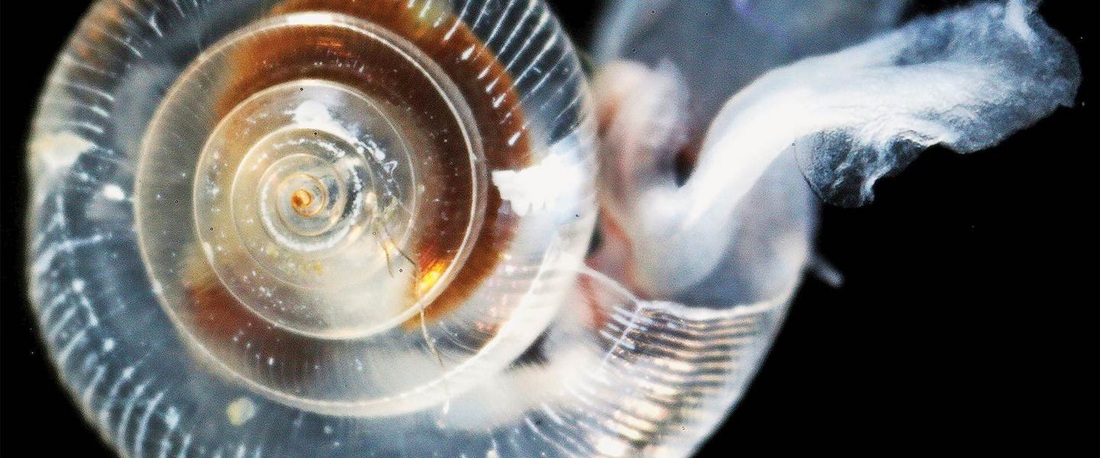|
Acidic Ocean Eating Away at 'Sea Butterflies' Off West Coast
By Miguel Llanos Acidic waters along the West Coast are dissolving the shells of tiny sea snails that are a food source for salmon, herring and other fish, scientists reported Wednesday, and conditions are worse than they expected. Caused by increasing carbon dioxide in the atmosphere, the ocean’s growing acidity threatens not just to the creatures at the bottom of the food chain, but seafood-eating higher life forms such dolphins, whales and humans. Oceans absorb carbon dioxide from the atmosphere, and scientists know that human emissions of CO2 from fossil fuels have added to the natural cycle, upsetting ocean chemistry by making them more acidic. Compounding that effect along the West Coast is the fact that some pre-industrial CO2 at deeper levels is seasonally churned up towards the surface, adding to the acidic mix, in a process known as upwelling. Sensing that pteropods, more commonly known as sea butterflies, might be vulnerable to that acidity, scientists with the National Oceanic and Atmospheric Administration took samples off the West Coast and reported their findings in a peer-reviewed scientific publication, the Proceedings of the Royal Society B. “We can indicate the human influence by looking at the shells from the offshore regions that are not impacted by the upwelling,” lead author and NOAA scientist Nina Bednarsek told NBC News. “There, we see up to 30-40 percent increase in shell dissolution from the pre-industrial times.” “There, we see up to 30-40 percent increase in shell dissolution from the pre-industrial times.” “Our future projection shows a 50 percent increase of dissolution by 2050 if we continue by 'business-as-usual' scenario” in terms of CO2 emissions, she added. “White lines on the surface” of sampled shells indicated a problem, NOAA scientist and study co-author Richard Feely told NBC News, and microscopic examination confirmed that the shells were indeed severely dissolved. The region between northern Washington and central California showed the highest rate of pteropods with dissolving shells, 53 percent of all sampled, the researchers stated. "We did not expect to see pteropods being affected to this extent in our coastal region for several decades," NOAA oceanographer and study co-author William Peterson said in a statement issued by NOAA. Researchers two years ago reported that pteropods off Antarctica were seeing dissolved shells, but the West Coast study is the first to show that the snails -- which grow to a half inch in size -- are being impacted in significant fishing areas. "Dissolving coastal pteropod shells point to the need to study how acidification may be affecting the larger marine ecosystem." "Dissolving coastal pteropod shells point to the need to study how acidification may be affecting the larger marine ecosystem,” Bednarsek said in the NOAA statement. Acidification has become a big issue in Washington state, where scientists last year found that the oyster industry was seeing large losses to acidification. The state earlier this year created the Washington Ocean Acidification Center to study which other marine species were being impacted and how to deal with it. "We do know that organisms like oyster larvae and pteropods are affected by water enriched with CO2,” Feely said in the NOAA statement. “The impacts on other species, such as other shellfish and larval or juvenile fish that have economic significance, are not yet fully understood." First published May 1st 2014, 9:27 am http://www.nbcnews.com/science/environment/acidic-ocean-eating-away-sea-butterflies-west-coast-n94001
0 Comments
Leave a Reply. |
AuthorWrite something about yourself. No need to be fancy, just an overview. Archives
August 2014
Categories |
| SCIENCE Level 1 |
|

 RSS Feed
RSS Feed
